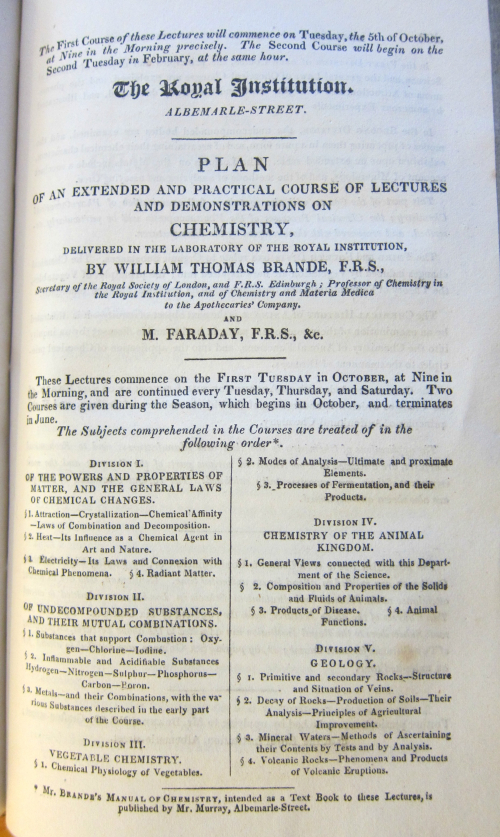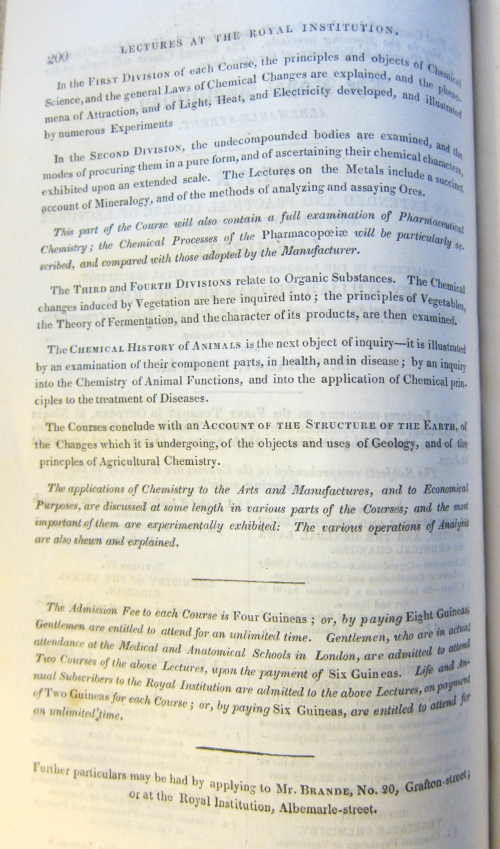The Quarterly Journal of Science, Literature, and the Arts (of the Royal Society of Great Britain). London, printed by John Murray, 1825, October-December, volume XVIII. 8.5x5”, 426pp, 4 folding plates. Half-calf, marbled boards. The hinges on the front and rear are a little rubbed and worn. Overall, a Very Good copy. $250 Including the following interesting articles and notes:
- Bigsby, John J. "Note on the Geography and Geology of Lake Superior”, a long article on pp 1-33, and pp 228-269 with a 10” folding map (though not a geological map). The earliest geological map of Lake Superior appears in Charles Lyell's Travels in North America in 1847; some of the published data that Lyell employed in producing his map was an “1829 report by H.W. Bayfield, who as a surveyor for the Royal Navy spent the years 1823 to 1825 circumnavigating the lake. Bayfield's report, in turn, included the geologic observations of two other travelers on the lake: H.R. Schoolcraft and J.J. Bigsby, both of whom, like Bayfield, had taken part in some of the earliest government-sponsored explorations in the region.” G. Morey (1989) Early Geologic Studies in the Lake Superior Region-the Contributions of H.R. Schoolcraft, J.J. Bigsby, and H.W. Bayfield. Earth Sciences History: 1989, Vol. 8, No. 1, pp. 36-42.
- Faraday, Michael. “On Fumigation”, pp 92-95;
- “On the Use of the Pocket Box-Sextant for travelers”, pp 50-60;
- Gregory, James. “Results deduced by Dr. Gregory from the Experiments made by himself and others on the Velocity of Sound” (from the article published in the Philosophical Transactions, 1824; pp 162-164;
- Harvey, George. Results of Experiments relating to the comparative means of Defence afforded by Ships of War, having square and curvilinear sterns”, pp 201-223, with two folding plates;
- Alderson, James. “On the Motion of the Heart”, pp 223-228;
- Daniell, J.F. “On the Radiation of Heat in the Atmosphere, in reply to M. Gay-Lussac”, pp 305-312;
Wonderful two-page advertisement for a course in chemistry, given by William Thomas Brande (1788-1866) and “M. Faraday” (1791-1867). Brande was the more-established and more socially-correct figure at this point (1825), though Faraday had already made a major contribution to the history of chemistry in 1821, which probably explains the top billing for Brande. Be that as it may, lecturing under the auspices of the Royal Institution was a very big deal, and obviously a major imprimatur for any career. (Also it is interesting to note that Brande's Manual of Pharmacy I advertised for sale on a full page opposite page vi.)






Comments